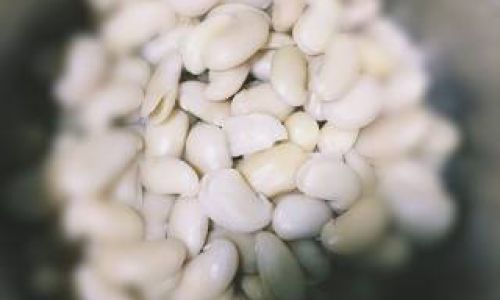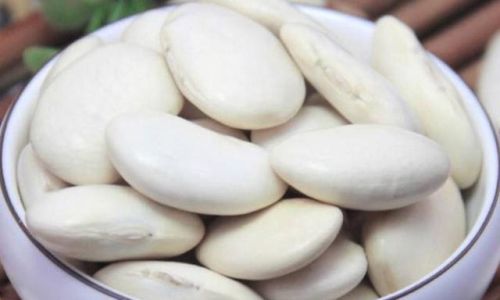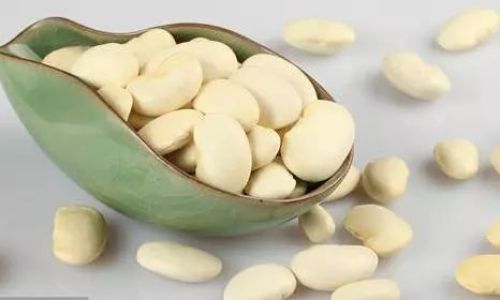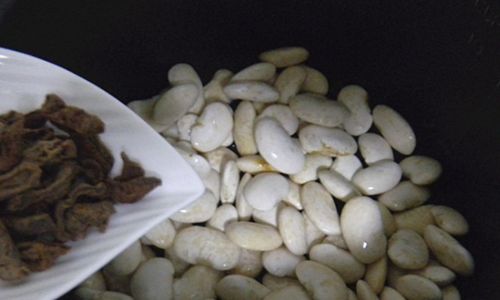Table of content
White kidney beans, scientifically known as Phaseolus vulgaris, are a versatile and nutrient-rich legume celebrated in cuisines worldwide. Renowned for their creamy texture, mild flavor, and impressive nutritional profile, these beans are a staple in soups, stews, salads, and dips. However, achieving the perfect consistency and flavor requires careful preparation and cooking techniques. This article delves into the intricacies of cooking white kidney beans, from selection to seasoning, ensuring even novice cooks can master this kitchen essential.
Understanding White Kidney Beans
White kidney beans, often labeled as cannellini beans in Italian cuisine, are large, oval-shaped legumes with a pale ivory hue. Their firm yet tender texture holds up well in slow-cooked dishes, making them ideal for hearty meals. Nutritionally, they are a powerhouse, packed with plant-based protein, dietary fiber, folate, iron, and magnesium. Regular consumption has been linked to improved blood sugar control, enhanced digestion, and reduced risk of chronic diseases.
Preparation: The Foundation of Perfect Beans
Selection and Sorting
Begin by purchasing high-quality dried white kidney beans from reputable sources. Avoid bags with broken beans, discoloration, or signs of moisture, as these may indicate spoilage. Once home, spread the beans on a clean, light-colored surface and manually inspect them. Remove any debris, stones, or shriveled beans. This step is crucial, as impurities can affect both texture and safety.

Rinsing
Transfer the sorted beans to a colander and rinse them thoroughly under cool, running water. This process eliminates dust and surface contaminants, ensuring a cleaner final product. Avoid using hot water, as it can prematurely soften the beans’ skins, leading to uneven cooking.
Soaking: To Soak or Not to Soak?
Soaking white kidney beans is a debated topic among home cooks. While optional, soaking offers several benefits:
- Reduced Cooking Time: Presoaked beans cook faster, saving energy and time.
- Improved Digestibility: Soaking helps break down complex sugars (oligosaccharides) that can cause gastrointestinal discomfort.
- Enhanced Texture: Soaked beans tend to cook more evenly, with a creamier interior.
Methods of Soaking:
- Overnight Soak:
Place the rinsed beans in a large bowl and cover with 3–4 inches of cold water. Allow them to soak for 8–12 hours at room temperature. Drain and rinse before cooking. - Quick Soak:
For spontaneous cooking, add beans to a pot, cover with water, and bring to a boil. Boil for 2 minutes, then remove from heat, cover, and let stand for 1 hour. Drain and proceed.
Cooking Methods: From Stovetop to Slow Cooker
Stovetop Cooking
The stovetop method offers maximum control over texture and flavor.
- Step 1: After soaking, drain the beans and transfer them to a large pot.
- Step 2: Add fresh water (or broth for richer flavor) in a 3:1 ratio (3 cups water per 1 cup beans).
- Step 3: Incorporate aromatic elements like garlic, onions, bay leaves, or herbs to infuse flavor.
- Step 4: Bring to a boil over high heat, then reduce to a gentle simmer. Skim off any foam that rises to the surface.
- Step 5: Cook uncovered for 45–90 minutes, depending on soaking time and desired tenderness. Test for doneness by mashing a bean against the pot’s side—it should yield easily.
Pro Tip: Avoid adding acidic ingredients (tomatoes, vinegar) or salt during the initial cooking phase, as they can toughen the skins. Add these after the beans are tender.

Slow Cooker Convenience
Slow cookers excel at transforming beans into tender, flavorful dishes with minimal effort.
- Step 1: Combine soaked beans, liquid (4:1 ratio), and seasonings in the slow cooker.
- Step 2: Cook on low for 6–8 hours or high for 3–4 hours.
- Step 3: Check for doneness and adjust seasoning before serving.
Advantage: The low, steady heat prevents beans from becoming mushy, making this method ideal for soups and stews.
Pressure Cooker Precision
Modern pressure cookers (including Instant Pots) drastically reduce cooking time while preserving nutrients.
- Step 1: Place soaked beans, liquid (2:1 ratio), and seasonings in the pressure cooker.
- Step 2: Seal and cook on high pressure for 15–20 minutes (soaked) or 25–30 minutes (unsoaked).
- Step 3: Allow natural release for 10 minutes before manually releasing remaining pressure.
Caution: Overcooking under pressure can lead to a paste-like texture. Start with shorter times and adjust as needed.
Seasoning and Flavor Enhancements
White kidney beans’ neutral flavor makes them a canvas for global seasonings. Explore these profiles:

- Mediterranean: Olive oil, rosemary, thyme, roasted garlic.
- Mexican: Cumin, smoked paprika, cilantro, lime zest.
- Asian-Inspired: Ginger, soy sauce, sesame oil, scallions.
- Italian: Sage, tomato, Parmesan rind, red pepper flakes.
For depth, sauté aromatics (onions, carrots, celery) before adding beans and liquid. Alternatively, roast garlic cloves until caramelized and blend into the cooking liquid for a silky finish.
Storage and Meal Prep
Cooked white kidney beans freeze exceptionally well, making them a meal-prep ally.
- Refrigeration: Store in an airtight container for up to 5 days.
- Freezing: Portion into resealable bags, flatten for easy stacking, and freeze for up to 6 months. Thaw overnight in the fridge before reheating.
Creative Culinary Applications
Beyond soups, white kidney beans shine in:
- Salads: Toss with arugula, roasted vegetables, and a lemon-tahini dressing.
- Dips: Purée with roasted red peppers, garlic, and olive oil for a hummus alternative.
- Casseroles: Layer with greens, cheese, and tomato sauce for a vegetarian bake.
- Grain Bowls: Combine with quinoa, avocado, and a spicy chili crisp.
Troubleshooting Common Issues
- Undercooked Beans: If beans remain firm after cooking, they may be old or require more time. Add ½ cup liquid and continue simmering.
- Mushy Beans: Overcooking or excessive acid/salt during cooking can cause this. Reduce heat and monitor closely.
- Foamy Surface: Skim foam during boiling to prevent bitterness.
Safety and Nutritional Considerations
White kidney beans contain lectins, naturally occurring proteins that can cause nausea if consumed raw. Cooking deactivates these compounds, emphasizing the importance of thorough cooking. Additionally, their high fiber content aids digestion, while the low glycemic index supports blood sugar stability.
Conclusion: Elevating Everyday Meals
Mastering the art of cooking white kidney beans unlocks a world of culinary possibilities. Whether simmered in a rustic Tuscan soup, blended into a velvety dip, or tossed into a vibrant salad, these legumes offer a blend of nutrition and versatility. By understanding preparation techniques, cooking methods, and flavor pairings, home cooks can transform this humble ingredient into the star of memorable meals. Experiment with seasonings, embrace slow cooking for depth, and savor the satisfaction of creating wholesome dishes from scratch.

In a world increasingly focused on plant-based diets, white kidney beans stand as a testament to the power of simple, wholesome ingredients. With patience and practice, any cook can harness their potential, turning every meal into a celebration of flavor and nourishment.






0 comments